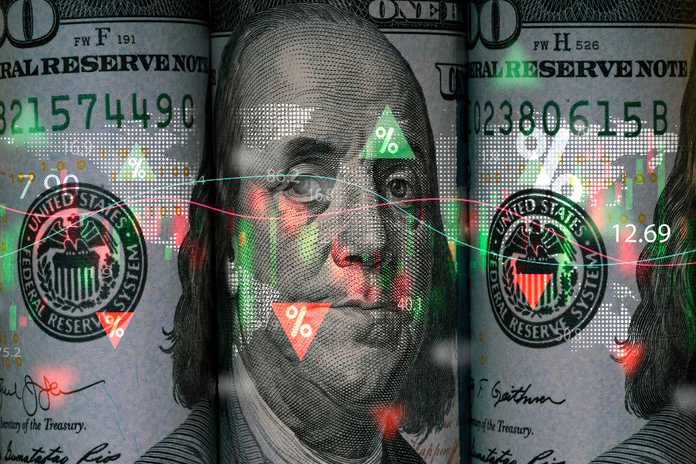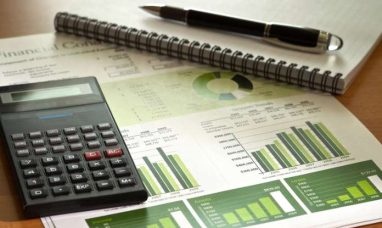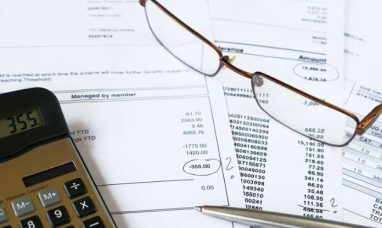The US national debt is rapidly approaching a staggering $35 trillion, a milestone that underscores the financial challenges facing the nation. However, this pressing issue has been conspicuously absent from discussions at the Republican National Convention and President Joe Biden’s campaign speeches.
Rising National Debt and Political Indifference
As of the latest data from the Treasury Department, the national debt stands at $34.9 trillion ($34,940,154,000,000 to be precise), representing over 120% of GDP. This debt load is set to surpass $35 trillion shortly, growing at an average rate of $8 billion per day. Despite this alarming trend, the US national debt has received minimal attention from political leaders.
Debt Surpasses Defense Spending
Earlier this year, the cost of interest payments on the debt exceeded defense spending, highlighting the financial strain on the government. If the current trajectory continues, the debt could represent 166% of America’s GDP by 2054. Yet, both the Republican convention in Milwaukee and Biden’s campaign trail have largely ignored this critical issue.
Republican Convention: A Shift in Focus
During the convention, Florida Gov. Ron DeSantis voiced support for fiscal responsibility, stating, “We stand for fiscal sanity, for low taxes, and for reduced debt.” However, this stance is contradicted by the economic reality that lowering taxes often leads to increased deficits and debt. Former presidential candidate Vivek Ramaswamy echoed this sentiment, criticizing past government decisions for burdening future generations with debt. He failed to acknowledge, however, that the 2017 tax cuts enacted by then-President Donald Trump significantly contributed to the current debt total.
Debt Growth Under Recent Administrations
The US national debt grew by nearly $8 trillion during Trump’s tenure and is on a similar trajectory under Biden. In total, the national debt has increased by over 70% in the last 7.5 years, fueled by new spending and longstanding financial obligations. Despite this, the vast majority of speeches at the Republican convention have not addressed the debt or deficits directly.
A Departure from Past Priorities
Historically, Republicans have campaigned on fiscal conservatism, advocating for a balanced budget amendment and reducing deficits. This year, however, the issue has taken a back seat. “The fiscal warning signs are really just so bright, so loud, and it’s as though nobody who’s running for office is paying attention,” said Maya MacGuineas, President of the Committee for a Responsible Federal Budget, in a recent interview with Yahoo Finance.
Minimal Mentions from Biden
On the Democratic side, President Biden has also largely sidestepped the debt issue. During an interview with NBC’s Lester Holt, the topic did not come up. However, Biden did address it briefly at an economic summit in North Las Vegas, proposing a minimum tax of 25% on billionaires to generate $500 billion over the next decade. This plan, however, faces significant legislative hurdles.
Public Concern and Political Inaction
Despite the political silence, public concern about the national debt remains high. A Gallup poll found that federal spending and the budget deficit are major worries for 51% of respondents. However, this concern has not translated into a campaign focus for either side. Biden has overseen substantial new spending but also decreasing deficits, with a projected $1.7 trillion deficit for fiscal year 2023, slightly improving in 2024.
Tax Cuts and Future Debt
The impending expiration of major tax provisions from the 2017 Trump tax cuts in 2025 has further implications for the national debt. Extending these cuts, as Trump has promised, could add $4 to $5 trillion to the debt. Biden’s plan to extend cuts for those earning under $400,000 would still cost over $2 trillion, though he proposes offsetting some costs with other tax increases.
Economic Implications of Rising Jobless Claims
The increase in jobless claims and continuing unemployment applications indicates a cooling labor market, which could have broader economic implications. A weakening labor market can lead to reduced consumer spending, slowing economic growth, and increasing pressure on the Federal Reserve to adjust monetary policy. The recent trends in jobless claims highlight the need for ongoing assessment and potential policy adjustments to support economic stability.
Conclusion
The rise in jobless claims to the highest levels since August signals emerging weakness in the labor market. With the unemployment rate trending upward and continuing claims increasing, the Federal Reserve faces pressure to consider interest rate cuts to support economic stability. As markets anticipate potential Fed actions, the focus remains on monitoring labor market trends and their implications for the broader economy.
Featured Image: Freepik









